When the writers (and future film makers) of the influential French film journal Cahiers du Cinema formulated what became known as “the auteur theory” in the late 1950s and early 60s, it caused a lot of controversy in cinematic circles. Simply put, it stated that the director was the prime mover, the “author” of the film and that everything in the film flowed from his vision.
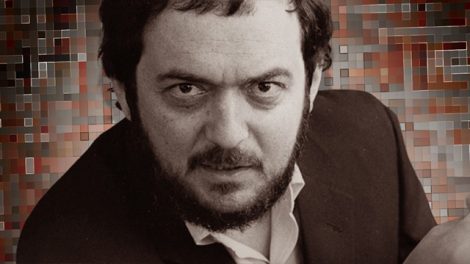
For those who had grown up with the Hollywood style, where a director was just a component of the greater package, this idea seemed hard to fathom. Even harder to grapple with was the notion that, if a film maker was considered a worthy “author”, then whatever film he (or she) might create would be a worthy entity.
One might well question that last perception. The British author Somerset Maugham once made the witty (and, like all good jokes, true) remark that only a mediocre person was at his best at all times. The bottom line is that not every film of a great film maker (author) is great.
Some of the best get into repetition and very many made “autumnal” works late in their careers which have to be taken with a measure of kindness. However, it is also true that very few great films have ever been made by film makers who are not great. (Note that film maker is used in place of director here. Most of the men listed below also wrote most of the notable films chosen for them, making them authors in the truest sense.)
Listed below are ten names with more than five excellent films each chosen to represent great works done by these artists. Are these the “best” directors of all time and are these their “best” films? Can there be ultimates in the arts? No, these are creators chosen because they have skill, talent, and a singular vision which marks them as unique and makes a film created by them identifiable as something they alone could produce.
The films chosen are masterful works which express their visions and which have imprinted those cinematic ideas into the viewer’s minds and imaginations for generations and which have also inspired many others to create their own visions.
1. Alfred Hitchcock
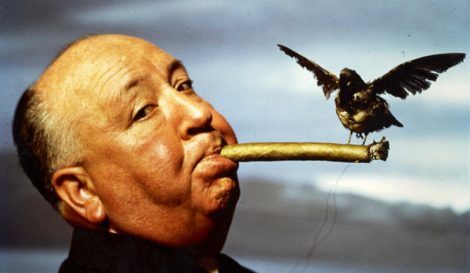
His Masterpieces: Notorious (1946), Rope (1948), Rear Window (1954), Vertigo (1958), North by Northwest (1959), Psycho (1960)
For someone who, for many of the years of his long life, let alone, the years he actively created on film, was considered a mere entertainer, the man who makes “those mystery movies”, Alfred Hitchcock made a formidable, if not incredible, rebound. For much of his career he was known as “the master of suspense”, an accurate appellation, if one limiting in its very connotations. Yes, he worked in the suspense genre but his works are far more than just genre films.
Hitchcock did something that few film makers today can claim: he started at the bottom and worked his way up, learning about all aspects of film making on his way. Along that way he met and married jill-of-all-trades Alma Reville, who was an expert in editing, continuity, and smoothing out a script. The two worked closely in unison for all of their remaining careers and Hitchcock proved an apt pupil.
Even those, such as actress Julie Andrews, who had less than triumphant experiences with Hitchcock, acknowledge that they learned more about the inner workings of the film making process from him than they did from anyone and anything else during the balance of their careers.
Hitchcock and Reville came of age during film’s growing and experimental years and absorbed all of the purely visual silent cinema’s great discoveries, particularly the ones advanced by Soviet and German film makers. Married to this immaculate technique were serious themes and explorations of character, which never call attention to themselves but exist within an entertaining story framework.
His best films show how his technique and content complement one another perfectly. While one may marvel at the special effect used in the bell tower when the vertiginous Scotty (James Stewart) ascends, one is more caught in the dilemma faced by Madeline/Judy (Kim Novack) in the once controversial last section of Vertigo.
Likewise, what the leftover Nazi’s may be up to in the Rio of Notorious may be intriguing, the fraught relationships of Alicia (Ingrid Bergman), Devlin (Cary Grant) and Sebastian (Claude Rains) ultimately carry much more emotional weight.
While Bruno’s (Robert Walker) idea of “exchange murders” is a fun plot peg, his character and effects on the conflicted life of Guy (Farley Granger) are of much more consequence ultimately. The neighbor with the sick wife may have indeed killed her but the relationship of Jeffries (Stewart again) and Lisa (Grace Kelly) and how it might be reflected in the many neighboring windows across the courtyard give Rear Window substance.
Finally, the many astounding plot permutations of Psycho are astounding but would the film be remembered if its plot and characters weren’t created to enter the mind at a deeper level? Though he didn’t write much for screen himself, Hitchcock always called the shots on his film and the fact the he welded form and content together so well makes the film and him one of the greats.
2. Akira Kurosawa
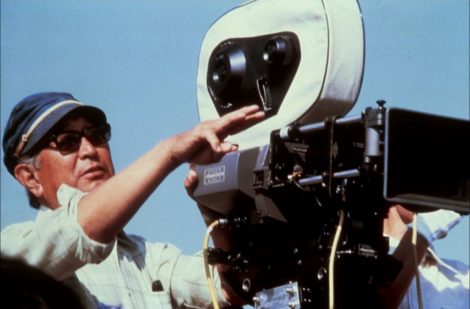
His Masterpieces: Rashomon (1950), Ikiru (1952), Seven Samurai (1954), Throne of Blood (1957), Yojimbo (1961), High and Low (1963), Ran (1985)
One wonders if the British Hitchcock and Japan’s Kurosawa ever met and had a good talk (probably not)? Like Hitchcock, Kurosawa learned from the ground up in his native film industry (where he, unlike the emigrating Hitchcock, pretty much stayed throughout his long career). However, he didn’t start his career until long after the silent period (which did last far longer in Japan than other places) had ended.
He began his film making odyssey during the World War II years and matured in the somewhat chaotic but artistically fertile years that followed. Unlike Hitchcock, Kurosawa can’t be pinned to one genre. While four of the six films cited are period pieces, he was equally at home with stories of the modern world.
Yes, he could create vibrant action films (Seven Samurai and Yojimbo would be great on that basis alone), but even that were informed by the pronounced humanism that marked his every work. Where Ikiru is among the most honestly soul-searching of dramas, Yojimbo can be seen as a comic adventure film, yet one that succeeds because the maker understands human nature so well.
Rashomon, which explores the subjective nature of truth, could be a gimmick film only, but transcends that label by its deep insights into the human psyche. All of this is married to a style which shows that the maker knows the camera, its lenses, and just how to use them (note the use of long lenses in key scenes in Seven Samurai).
Sadly, Kurosawa was thought of as “lesser” in his native land for being too “western” in his film making (and more than one Kurosawa film was successfully remade by Hollywood). No, he didn’t relentlessly explore the character of his country as his equally great contemporary Yasujiro Ozu, but the nay-sayers miss that he depicted a greater humanity with consummate skill and integrity.
3. Andrei Tarkovsky
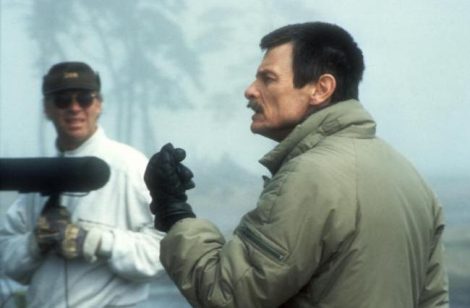
His Masterpieces: Ivan’s Childhood (1962), Andrei Rublev (1966), Solaris (1972), The Mirror (1975), Stalker (1979), Nostalgia (1983), The Sacrifice (1986)
Poets, as such, don’t exist in commercial cinema (certainly not in Hollywood). They may be found in independent and arthouse cinema, but, even then, their existence seemed rather limited.
One of the greatest of poetic film makers, Soviet director Andrei Tarkovsky, is a grand case in point. The films listed here come close to being his entire filmography. Yes, he, like his far earlier Soviet peer, Sergei Eisenstein, saw his career blighted by government interference, leading to films being censored and long withheld, and long periods of enforced inactivity.
Like the others listed here, Tarkovsky learned his craft from the bottom up and knew how to tell the stories which expressed his heart and mind. However, story might not be the correct word for what he related in his films. Yes, there were plots and characters but a Tarkovsky film seemed always to be trying to express an idea, a feeling, a mood often hard to grasp.
Be the vehicle the autobiographical Ivan’s Childhood (relating a boy’s coming of age in a war ravaged country) or the science fiction oriented Solaris and Stalker, it’s clear that Tarkovsky was really interested in the human soul and spirit. No Tarkovsky film is “easy”.
The films are primarily long, deliberately paced, diffuse in meaning, giving up their secrets stubbornly, if at all. Yet, each film seems to have a life force of its own and leaves the accepting viewer overwhelmed emotionally. Obviously, Tarkovsky was not one for the masses (as the well-intentioned remakers of the Hollywood version of Solaris discovered), but for the adventurous viewer he is endlessly rewarding.
4. Federico Fellini
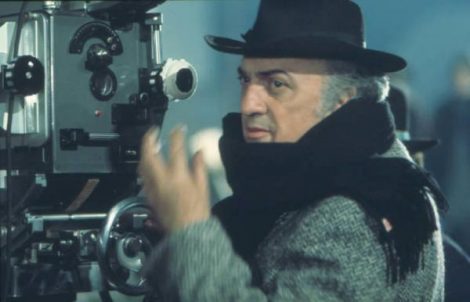
His Masterpieces: I Vitelloni (1953), La Strada (1954), The Nights of Cabiria (1957), La Dolce Vita (1959), 8 ½ (1963), Amarcord (1973)
Once more, Italy’s Federico Fellini stays in the tradition of those who learned their craft by doing and starting in a less commanding position than directing. In this case the young man from the provinces of Italy began as a screenwriter, notably during Italy’s famed Neo-Realist era (though his eventual films, while incorporating elements of that movement were not of it).
His early efforts as director show some of the charm, wit and skill he would display when his talent fully flowered, but were a bit awkward. However, in 1953, he did what those wishing to become writers are always advised to do: write about what you know.
He took this a step further by writing and directing his first autobiographical film and first masterpiece, I Vitelloni, which adroitly told a lightly fictionalized version of his young manhood days among friends who didn’t possess his talent or drive.
Throughout his career, when Fellini stuck to subjects close to his experience and heart, the films always seem to turn out spectacularly well, with 8 1/2, his film about a film maker very much like himself having a creative crisis, becoming his magnum opus.
Also working well for him were films which showcased his lifelong muse, his actress-wife Guiletta Massina, who had an uncanny knack for blending comedy and pathos and being able to switch from one to another seemingly without blinking an eye (what Jerry Lewis spent his professional life trying to do, she truly could do).
The great vehicles Fellini created for her, La Strada and, her finest hour, The Nights of Cabiria, were among his very best. What makes a Fellini picture distinctive though? He was a master of imagery and could very often summon up a strain of surrealism (quite often comic) which was seamlessly integrated into even his most serious films.
La Dolce Vita, his account of post World War II Rome as seen through the eyes of a newspaper writer much like Fellini himself at one time, could have been just a serious cautionary narrative about a wayward society but for the extraordinary touches Fellini brought to it (think of the helicopter carrying the ancient statue of Christ out of Rome).
Also, Fellini seemed to love people and his warmth informs all of his best films. After 8 1/2, he did seem a bit stymied and made films more and more baroquely surreal, often to diminishing returns. However, his best linger in the minds of any passionate and devoted film lover.
5. Ingmar Bergman
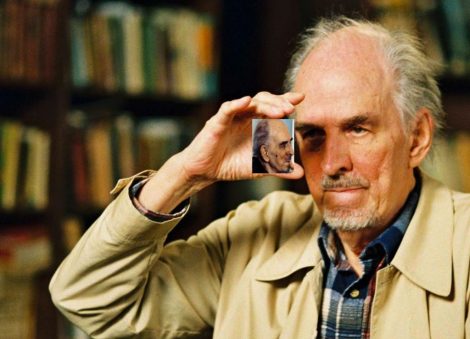
His Masterpieces: The Seventh Seal (1957), Wild Strawberries (1957), The Virgin Spring (1960), Through a Glass Darkly (1961), Persona (1966), Cries and Whispers (1972), Scenes from a Marriage (1973), Fanny and Alexander (1982)
Some love him and some love to hate him but no one ever has accused Ingmar Bergman of not knowing exactly what he was doing. (While panning 1958’s The Magician, eminent critic Pauline Kael did allow that it was the work of a master.)
Like Fellini, Bergman started off as a screenwriter. However, unlike most of the others on this list, he was also heavily involved in the theater, not only at the start of his professional life but all the way through it (even after he supposedly stopped directing films).
Though he didn’t, somewhat oddly, ever adapt any notable plays to the screen (he wrote virtually everything he ever directed himself), there is a decided theatrical quality to many of his films. Like any man of the theater, he loves his players and he got extraordinary work from them, especially the many female players who were muses throughout his creative life (many of whom had personal relationships with him).
Though he did have a fantastic element present in many of his works (Death incarnated in the allegorical Seventh Seal, the disturbing dream sequence at the start of Wild Strawberries), his films were mostly very matter of fact deliberations on life, relationships, human nature and, most of all, faith.
Bergman truly wrestled with the place of God, or the absence of God, in his characters’ lives. Some have felt coldness in his work but a closer look just shows that he is looking at human frailty and the fact that humans have a capacity for cruelty not only to others but to themselves.
Though he could do comedy well (ironically the comic romantic roundelay Smiles of a Summer Night was his international breakthrough), his relentlessly probing dramas are his calling card.
Perhaps the ideal film to demonstrate Bergman’s talents is the two character drama Persona, which also showcases the film maker’s uncanny talent for delineating the psyche of women. Two women (played by Bibi Anderson and Liv Ulmann, among his greatest players), a nurse and a patient who is non-communicative due to a breakdown, are in a remote beach house together. Two characters are fully explored, even though one never speaks, and the conclusions are complex and open to many interpretations.
As with Tarkovsky, Bergman’s films aren’t for everyone, though his theatrical streak made them much more palatable to a larger audience over a much longer period of time. As with Kael and The Magician, one may not like Bergman, but one must give him his due as a skilled maker of notable films.
6. Jean-Pierre Melville
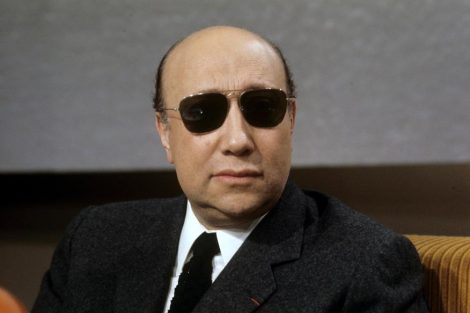
His Masterpieces: Le Silence de la mer (1949), Bob Le Flambeur (1956), Le Doulos (1962), Le deuxième souffle (1966), Le Samourai (1967), Army of Shadows (1969), Le Cerce Rouge (1970)
Much like Hitchcock, France’s Jean-Pierre Melville might be thought of as a genre director (he made many crime-oriented films) and one pandering to popular tastes. Like Bergman he started as a man of the theater (and acted in such films as 1959’s famous Breathless).
Like Tarkovsky, his career was sadly truncated by a short life (though, happily, not by government interference). Like Hitchcock and Kurosawa, few recognized his great talent fully until his actual creative moment had passed (and, in this case, he had passed on).
Though he would have wished to start his career sooner, Melville was very much caught up in the drama of World War II, courageously serving as an underground freedom fighter (which served as the basis of one of his few films to address this time, alongside Leon Morin, Priest, Army of Shadows, which might well be his outlier masterpiece).
After the war ended, he began a career in the theater and made a superb low-budget film, only later really noticed, entitled La Silence de la Mer (1947). After becoming acquainted with the famed Jean Cocteau, he was awarded the task of directing the film adaptation of the acclaimed Cocteau novel Les Enfants Terribles(1950), which was a big hit but not really from his heart. Five years would pass before he would direct on film again but the vehicle was Bob Le Flambeur, his first mature masterpiece.
As with most of his crime films, Melville is interested in, not the crime (a la 1950’s The Asphalt Jungle or 1955’s Riffifi), but the criminal. The title character is an old hand at crime and, though he couldn’t have lived his life another way, has his own code of honor though he does have his regrets that it all might have been different. Melville is extraordinary in not judging his often unfortunate characters (much more uncommon at the time than in later eras).
Like the film noirs of the 1940s and 1950s (and the French poetic realist films of the 1930s), Melville’s works are more like Greek tragedies set in a modern urban crime milieu. To much of the world at the time, the films just seemed like genre caper stuff.
However, looked at today, Melville’s sureness of touch with the camera, the characters, the pacing, and the actors (even often inexpressive Alain Delon was moved to convey what the director wanted in their films together) add up to films which are far beyond that facile interpretation. Some directors look good at the time and fade later but Melville and his work has only gotten better with time.
7. Luis Buñuel
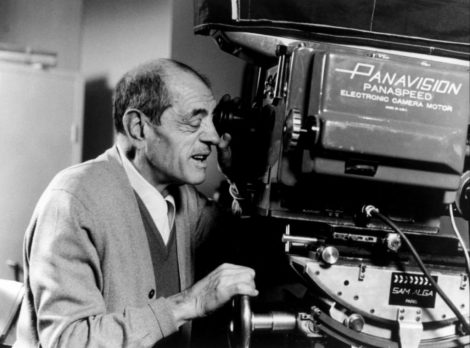
His Masterpieces: Un Chien Andalou (1929), L’Age D’Or (1930), Los Olvidados (1950), Viridiana (1961), The Exterminating Angel (1962), Belle de Jour (1967), The Discreet Charm of the Bourgeoisie (1972), The Phantom of Liberty (1974), That Obscure Object of Desire (1977)
Luis Bunuel has some 35 films credited to him as director and a deserved reputation as the foremost surrealist in cinema history. This is impressive enough but the fact that he didn’t allow himself to be listed alongside some of the other film makers here in the truncated career category (meaning no disrespect to them, as often circumstances were beyond their control) is extraordinary.
No less than the Catholic Church came down on Bunuel and, after getting a look at his cheerfully blasphemous surreal comic masterpiece L’Age D’Or, promptly banned him from filmmaking…for life! Happily that mini-epic of the absurd and biting was worth stirring up trouble over (though no film is worth that much trouble).
Bunuel left Europe for North America, namely Mexico, another Catholic country but far from his trouble spot and one without a language barrier. There he labored in the Mexican unit of Warner Brothers publicity department until he managed, in the very late 1940s, to start directing in the film industry of his adopted country, then very much of the third world and obscure.
Happily, talent will out and, before too many years passed, he started to craft films that drew the attention of discern films critics and viewers the world over. However, it may be noted that most of the films cited here are from the triumphant last phase of his career, after he was able to return to Europe and, eventually, Spain. Even he had soil in which he best grew.
What makes a Bunuel film special? First of all, he was a relentless critic of established social institutions which he considered dated, illogical, hypocritical, inhumane, and brutal. In other words, he was against the social elite, the government and the church, not necessarily in that order.
Secondly, he had studied theater and art before taking up film making (the great surrealist painter Salvador Dali was his friend and professional colleague in his early film ventures, including L’Age, before he “repented” to the authorities and saved himself). There were really no film making schools at that time but that art training helped Bunuel to perfect an immaculate technique which served him well.
Though his spirit was wild and anarchic, his style was very formal and precise, which somehow made the way he skewered his subject feel all the sharper. However, the big distinction was that the numerous surreal forays his films would take.
The images he created for his films were quite like what Dali achieved in his painting: the pictures were clearly unreal yet contained a psychological reality no literal image could express.
Bunuel was also quite gifted with actors, a fact seldom commented upon (he could get exactly what he needed from such cinematic ice goddesses as Catherine Deneuve in Belle and Tristana and Stephane Audran in Discreet Charm). Many film makers tail off towards the end. However, maybe because he was denied so many of what should have been his prime years, he mostly saved the best for last.
8. Robert Bresson
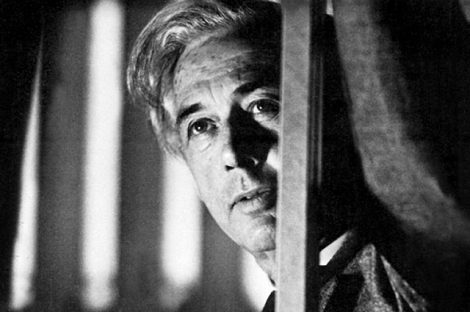
His Masterpieces: The Diary of a Country Priest (1951), A Man Escaped (1956), Pickpocket (1959), Au Hazard Balthazar (1966), Mouchette (1967), Lancelot of the Lake (1974), L’Argent (1983)
Once more an artist is put in the truncated or limited department due to a paucity of output. However, in Robert Bresson’s case, it’s a bit difficult to imagine him being but so prolific given the specialized output he created.
If Tarkovsky was one of the great poets of the screen, then Bresson could be labeled one of the great philosophical voices of cinema. Bresson films very clinically observe life in its aspects both good and bad (and, sadly, bad dominate realistically quite often). Au Hazard Balthazar, in fact, has been described as life in an hour and a half.
From a distance, Bresson sounds like a spiritual cousin to Bergman, especially since they operate in much the same moral/ethical territory. However, their techniques are far different. Whatever one may think of a Bresson film, it could never honestly be categorized as theatrical.
In fact, Bresson was famous for his disdain of drama and actors. The people who appear in his films are for the most part, non-professionals, whom he labeled “model” and instructed to deliver their lines in monotones with a minimum of gestures. (The fact that two of them, Dominique Sanda and Anne Wiazemsky, later actually became actresses displeased him greatly.) This style of “acting” was in perfect concert with his scripting and direction.
Bresson was a minimalist who believed that the surest way of getting inside is to stay resolutely outside. Bresson does not engage in exposition or extraneous detail and never throws a “comfortable” moment to the viewer. (The cast of Lancelot du Lac is mostly encased in armor with no bodily part truly visible and, yet, it works!) This stripping away of artifice forces the viewer to concentrate on the theme Bresson is expressing and makes each film an intense experience.
The basic premise of Balthazar could work for a Disney film (the life of a donkey), but Bresson turns it into a harshly heartrending parable concerning the plight of the defenseless in an uncaring world.
Mouchette turns the oft-told story of the hard life of an abused young girl and The Diary of a Country Priest, relating the short, unenviable life of a much misunderstood cleric, into stoically unbearable tragedy. Pickpocket, a masterpiece among masterpieces, becomes one of the great explorations into guilt and innocence. Once again, Bresson isn’t for everybody but he rewards those who will invest in his view of the world.
9. Rainer Werner Fassbinder
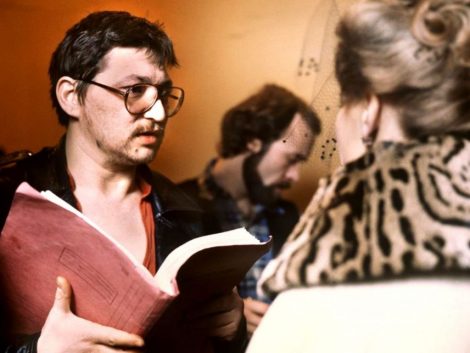
His Masterpieces: The Merchant of Four Seasons (1971), The Bitter Tears of Petra Von Kant (1972), World on a Wire (1973), Fear Eats the Soul (1974), Fox and His Friends (1975), Chinese Roulette (1976), The Marriage of Maria Braun (1979), Berlin Alexanderplatz (1980)
Though the countries of France and Germany border one another, France’s Robert Bresson and Germany’s Rainer Werner Fassbinder, contemporaries for a while, were artistically worlds apart. Where Bresson was about the last cinematic word in austerity, Fassbinder…well, if the artistic term “baroque” didn’t exist, it would have had to have been invented just for him.
Fassbinder seemed fascinated by two overarching things: the world of theater/cinema and the relatively recent and tortuous history of his country (West Germany in his time). One might say he loved those things but love/hate seemed to be as close as he could manage to much of anything in his relatively short time on Earth.
However, the word truncated will only be used to describe what his output was not: though he died (of his own excess) in his early forties, he created some 44 films! No, not all were masterpieces but a surprisingly large number of them were good.
Fassbinder revered German-in-Hollywood director Douglas Sirk and the “plastic” style Sirk created for his films where every color, prop, design and angle was put at the service of an artistic whole. His own films became much like that, which gave them an ascetically pleasing look.
However, while Sirk, who worked in a very glossy and heavily censored place and time, had to suggest much by inference, subtext and irony, Fassbinder could, and did, come right out and say it and show it.
The mainly gay Fassbinder employed a lot of subjects not directly used until modern and more permissive times (Fox and Petra Von Kant feature gay main characters and observe their various places in society).
Almost all of his films focus on those who live lives that are somewhat disconnected from mainstream society. His BDR trilogy (of which Maria Braun is the star attraction) traced the changes in post-war German life through the lives of women making their way as best they can.
Part of the reason Fassbinder could make so many films so well was due to the dedicated (if constantly embattled) team of actors and technicians who worked with him (and the great actress Hannah Schygulla must get mention, especially for her work in Maria Braun).
His magnum opus was the fourteen hour made for TV Berlin Alexandeplatz, an epic version of Alfred Doblin’s famed novel concerning Berlin in the days just before the Nazi’s rise. The project (including its controversial, highly personal, coda) seemed to weave together everything that had stated Fassbinder to the cinematic world.
It wasn’t his last project but it might just as well have been. He seemed to have no place left to go in his work. Or did he? Sadly, the world will never know if he could have changed and grown and surprised. However, he left enough fine work for any lifetime.
10. Stanley Kubrick
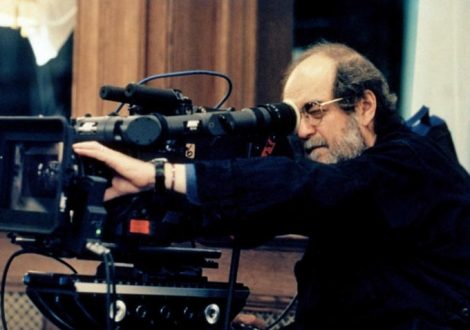
His Masterpieces: The Killing (1956), Paths of Glory (1957), Dr. Strangelove, or How I Learned to Stop Worrying and Love the Bomb (1964), 2001: A Space Odyssey (1969), A Clockwork Orange (1971), Barry Lyndon (1974), The Shining (1980), Eyes Wide Shut (1999)
The list ends much as it began, but with a twist. Like Hitchcock, Stanley Kubrick stood at the top of his profession. Unlike Hitchcock, acclaim always seemed to be his (though from the Academy of Motion Picture Arts and Sciences, who only gave him an Oscar for creating 2001’s special effects!).
Unlike the prolific Hitchcock, who gave the cinematic world 53 films and assorted TV efforts, Kubrick’s output stands at 13 films and a few early short subjects (one doubts he ever even looked at TV, much less worked in the medium).
However, unlike some of the others on this list, Kubrick’s output was not truncated, abbreviated, limited by outside forces, or curtailed. He was a legendary perfectionist who always would settle for nothing less than things being done “the right way” (i.e. his way, right or wrong).
That Kubrick’s way was so often right is a sign of his cinematic genius, at least for the majority of his career. One remarkable thing about his professional history that rarely arouses comment is that from the start of his career (the short The Day of the Fight in 1950) through Barry Lyndon, every Kubrick film seems to substantially advance over its predecessors.
At almost any point in his career he would have been at a level few could approach but he kept setting challenges for himself. (Time magazine tempted fate by doing a cover article on the then-just-being-released Barry Lyndon, calling it his greatest gamble, only to have the film become Kubrick’s first big box office failure. Perhaps that sad fact winded him a bit thereafter.)
Kubrick started his career as a photographer, notably for Look magazine. The training for that occupation obviously stayed with him throughout his career. Virtually every frame of a Kubrick film could pass muster as a picture for a high end periodical or coffee table book (and many have ended up in books). There is also, due to this fact, a stateliness and stillness to Kubrick films.
Even when the characters engage in raucous activities (such as Dr. Strangelove, Clockwork Orange and even The Killing) it is they and not Kubrick and his camera who are exhibiting that quality. Like Bresson, he observed without any real editorial comment.
The people inhabiting Kubrick films are often extreme and quite often living outside of society’s conventions (throw a dart at Kubrick titles on a board and then pick a main character and, chances are, they will exemplify this fact).
A Kubrick film will move at its own measured pace with formal technique and observe people doing the darndest things. However, the pull of the two forces seems to create a memorable tension which, quite often, imprints itself on the viewer’s psyche.
There were many who found Kubrick and his work quite cold (to the delight of some and the woe of others) and there is a chilled element to the films but somehow this control seems just the right approach to characters and a society which seem to have largely lost those qualities.
Woodson Hughes

You must be logged in to post a comment Login